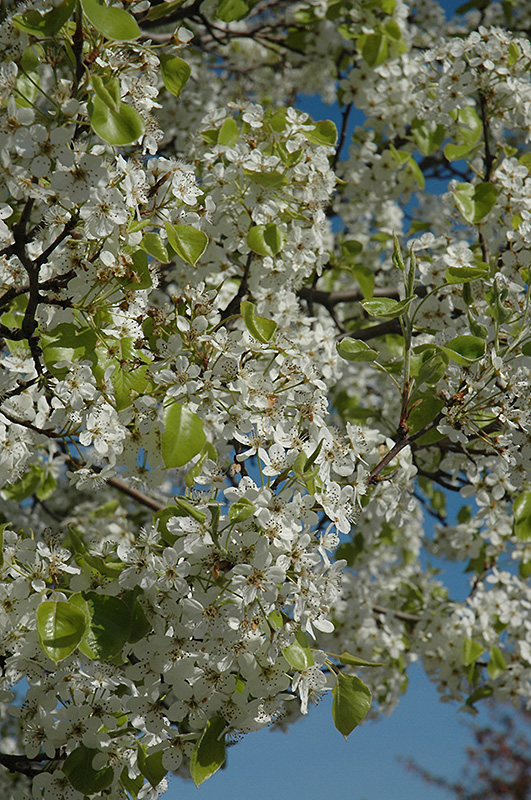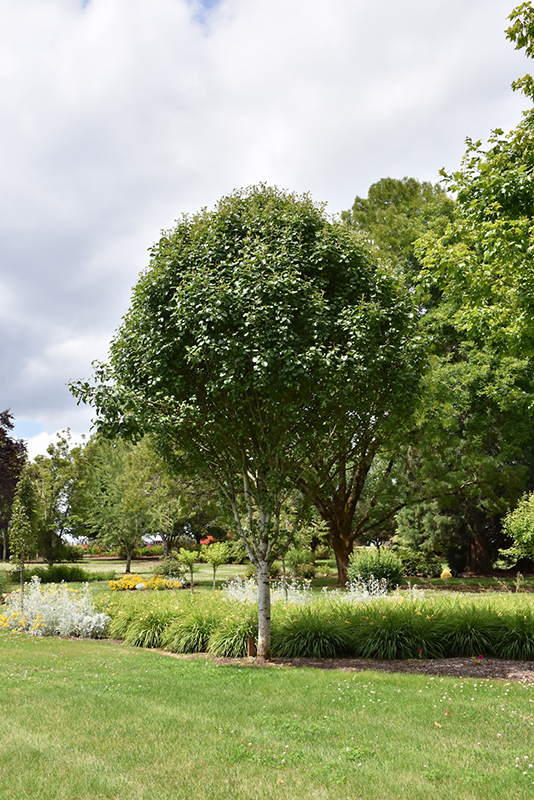>> Home
Jack Ornamental Pear
Pyrus calleryana 'Jaczam'
Height: 20 feet
Spread: 20 feet
Sunlight:
![]()
Hardiness Zone: 5a
Other Names: Callery Pear
Description:
A dwarf, rounded variety for smaller home landscapes, this one is absolutely covered in showy white flowers in spring; leaves are deep green and glossy; inedible tan-brown colored fruit in summer is quite inconspicuous, excellent red-purple fall color
Ornamental Features
Jack Ornamental Pear is bathed in stunning clusters of white flowers along the branches in mid spring before the leaves. It has dark green deciduous foliage. The glossy heart-shaped leaves turn an outstanding purple in the fall.
Landscape Attributes
Jack Ornamental Pear is a dense deciduous tree with a more or less rounded form. Its average texture blends into the landscape, but can be balanced by one or two finer or coarser trees or shrubs for an effective composition.
This is a high maintenance tree that will require regular care and upkeep, and is best pruned in late winter once the threat of extreme cold has passed. It has no significant negative characteristics.
Jack Ornamental Pear is recommended for the following landscape applications;
- Accent
- Shade
- Vertical Accent
Planting & Growing
Jack Ornamental Pear will grow to be about 20 feet tall at maturity, with a spread of 20 feet. It has a low canopy with a typical clearance of 3 feet from the ground, and is suitable for planting under power lines. It grows at a fast rate, and under ideal conditions can be expected to live for 50 years or more.
This tree should only be grown in full sunlight. It prefers to grow in average to moist conditions, and shouldn't be allowed to dry out. It is not particular as to soil type or pH. It is highly tolerant of urban pollution and will even thrive in inner city environments. This is a selected variety of a species not originally from North America.


